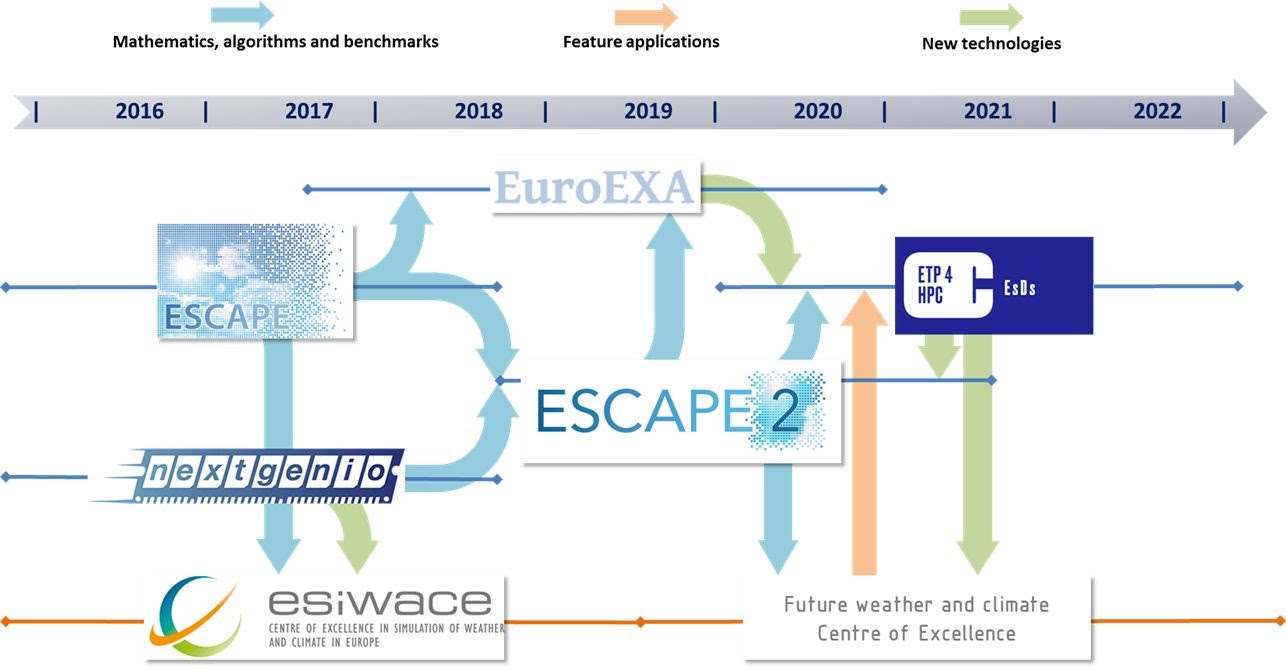ESCAPE-2 will play a central role in advancing European weather and climate prediction capabilities to the exascale through the unique combination of transformational research on mathematics and numerical methods supported by a powerful domain-specific language concept. This combination is considered crucial for achieving, at the same time, performance and performance portability across hardware technologies providing exascale computing capability.
The concept of weather and climate dwarfs pioneered in ESCAPE will be extended across models towards a community representative benchmark integration. Dwarfs are easy to handle for rapid development cycles and identify key bottlenecks preventing the full application from running efficiently on exascale systems. Models and benchmarks in ESCAPE-2 will be scalable to the full size of HPC systems available to the ESCAPE-2 consortium. The benchmarks will serve as application demonstrators in the ESiWACE centre of excellence (and its potential successor) for quantifying the computability of the exascale science challenge. The Kronos workload simulator developed in NextGenIO is included in the ESCAPE-2 benchmark. ESCAPE-2 dwarfs, models, and ultimately the HPCW benchmark will represent weather and climate applications in the EuroEXA co-design project and the anticipated Extreme-scale Demonstrators (EsD) - again representing realistic workloads on full size machines with close to real-world applications (Figure below). In the project itself, BULL will serve as the test-bed provider for establishing the porting and adaptation process. Enhancing energy efficiency is a prime target for ESCAPE-2 since operational prediction imposes strict runtime requirements on product delivery with direct implications on flop and watt rates. Concerning energy efficiency and resilience, the algorithmic methods developed in ESCAPE-2 aim at enhancing numerical accuracy and stability across a diverse range of heterogeneous hardware options. This is of key importance to future-proof key European applications and supporting the continued development of alternative energy-efficient hardware options.

